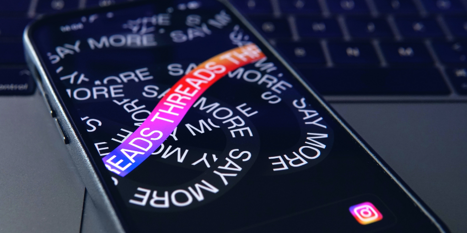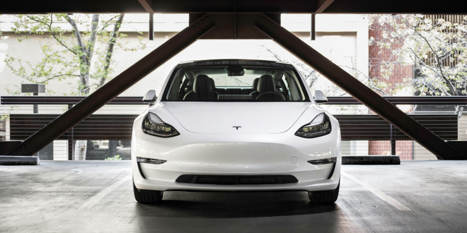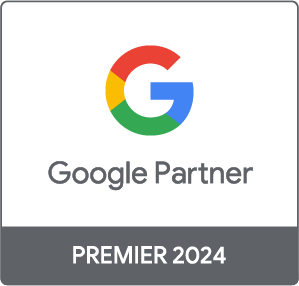Getting LinkedIn Ad campaigns right - ultimate guide

Every marketing manager, business and influencer seems to be using social media for marketing, and it can be challenging to figure out the best plan of action to bring about success and your dream ROI.
Enter, LinkedIn Ads. This is a platform that doesn’t get nearly enough attention online compared to platforms like Google Ads or TikTok Ads. But we believe that this is a truly powerful platform for ad campaigns, largely down to its unique user base.
This guide will set you up for success, ready to create an efficient and effective ad campaign that will bring in an engaged audience directly to your brand:
- An overview of LinkedIn Ads
- Ad types: Best practices
- Costs: Considerations
- Measuring Success
- Organic content
Overview of LinkedIn Ads
LinkedIn has a highly engaged base of frequent users, who see the platform as more than just social media. For active users, this is a tool. A networking opportunity that can place them directly in contact with key decision makers and influencers across various industries.
This powerful platform has 310 million active monthly users, with a further 590 million users with accounts who visit less regularly. That’s a lot of engagement. And with the average user spending over 7 minutes interacting with LinkedIn during each visit, you have plenty of opportunity to connect.
The user base of LinkedIn is what makes it so powerful. It brings together some distinctive demographics: professional, affluent and educated. Want to know the most important element of a LinkedIn user? Their intention. Most LinkedIn users are there to network, so they are actively searching for connections relevant to their industry. This isn’t your usual social media scroller, looking exclusively for entertainment or distraction.
LinkedIn Ads offers a streamlined approach to reaching this niche audience, ready to take action for their career or business. The platform has a strong emphasis on professional networking, career advancement, and industry-specific content. This makes it primarily suited to B2B marketing, lead generation, and professional services
However, don’t just assume that placing ads on LinkedIn will guarantee results and be worth spending a portion of your budget. To get the best results, you need a thorough understanding of everything LinkedIn’s ad platform has to offer, so you can create the perfect campaign, specific to your unique goals.
Ad types
1. Sponsored Content
These are also known as native ads, and are automatically integrated into users' feeds. They look just like regular LinkedIn posts, other than being labelled as “promoted”.
You can choose from the following ad formats when creating sponsored content:
- Single image ads
- Carousel ads
- Video ads
- Event ads
- Document ads
- Thought leader ads
Ultimately, these ads are designed to drive engagement, clicks, and conversions for your business, in a more direct way than organic marketing.
Best practices: Captivating visuals, concise copy, compelling call-to-action.
2. Sponsored Messaging
Here, you can create personalised messages that are delivered directly to users' LinkedIn inboxes. This ad format is Ideal for targeted outreach, nurturing leads, and driving conversions with key contacts that might otherwise be difficult to get in touch with.
LinkedIn currently has two inboxes; Focused and Other. As you might imagine, you’ll get a better response rate if your messages end up in the Focused inbox. Sponsored messaging is one way to do this.
A great feature of message ads is the recent updates from Linkedin, converting each message ad into a conversation ad. These ads have a CTA button at the end of each message, further encouraging fast and easy engagement with your brand.
Best practices: Craft personalised messages, avoid overly promotional content.
3. Text Ads
These are simple, text-based ads that are displayed on the sidebar, via a recognisable PPC style of management. It’s a cost-effective option for increasing brand visibility and driving traffic.
Think of it like a brand awareness campaign on Google Ads. With a minimal budget, you can really maximise your impression count for a campaign using this format. These ads include a small logo, and a one sentence piece of text, that you can tailor for maximum impact.
Best practices: Emphasise clear messaging and strong value proposition.
4. Dynamic Ads
One of the more unique styles of ad available on the LinkedIn platform, dynamic ads are a highly customizable format that is tailored to individual users.
Simply put, they use profile data to create personalised content. For example, they might use a User’s first name in the ad, speaking to them directly, and using their profile photo to make that first connection.
Best practices: Drive engagement and conversions with relevant messaging.
5. Display Ads
These are ads created using various images and videos that are displayed across LinkedIn. Display ad formats available on LinkedIn include single image ads, carousel ads, document ads (where you can promote image-heavy content such as slideshares and presentations) and video ads.
Best practices: Use eye-catching visuals and compelling messaging.
6. Specialist Ads
These include ad types that aren’t strictly image, messaging or text based. Including event ads, promoted lead generation forms, spotlight ads, thought leader ads and single job offer ads.
These mostly do what they say on the tin, offering prompted opportunities for highly specific elements of your marketing and outreach.
Best practices: Be intentional with what you promote in these ad formats. Not ever form, event or job offer will benefit from being used as an ad. But if you find the most engaging elements of your outreach, you could create some really effective opportunities to build your brand in the LinkedIn market.
Costs
When working with a new format of ad and a new platform to promote on, you need to be mindful of how your budget is being spent.
Bidding Strategies
Choose between cost-per-click (CPC) and cost-per-impression (CPM) for your campaign. Some ad formats like message ads will have a cost-per-send (CPS) price. As the first hours and days go by for your initial campaign, adjust your bids based on campaign objectives and budget constraints.
Budgeting Considerations
It’s vital to calculate and set daily or total campaign budgets to control spending. Allocate your budget strategically across different ad formats and targeting options, as some ad formats have a higher CPC, while others bring in conversions at a higher rate, sometimes with a lower CPC, but a higher cost per conversion overall.
In short, it’s different for every ad format. So take your time to see how your budget performs across a couple of different ad types before assigning your total available budget.
Measuring success
Once you’ve created your first campaign, you need to keep an eye on what’s working, what can be improved, and what is simply costing you money and could be removed entirely. This is where optimisation can save you thousands, and pivot your campaign success metrics to a new high.
LinkedIn Analytics and Reporting Tools
Make use of LinkedIn Ads Manager to track performance metrics and campaign insights. Analyse audience engagement, ad reach, and conversion data for informed decision-making. There are some very handy demographic features within LinkedIn’s ad manager, for example, you can check to see the specific metrics of users with a certain job type, analysing how they responded to your ad compared to other users.
It’s always worth drilling down into the specifics, taking time to monitor metrics such as click-through rate (CTR), conversion rate and cost per lead (CPL) among others. THe useful charts and graphs that are generated from your data are a speedy way to get a sense of your overall campaign performance.
Test and Refine
Once you’ve gained confidence in your brand strategy and marketing objectives, conduct A/B testing on your ad creative elements, targeting criteria and bidding strategies. It may be the case that small adjustments to certain parameters of your campaign can help connect you to a specific demographic, or improve your performance overall.
Refine your campaigns based on data driven insights, so that any changes you make are informed by metrics that are tailored to your specific campaign.
Organic content
Finally, once you’ve spent some time crafting the perfect promoted campaign, it’s time to turn your attention to your organic content.
Don’t just have an empty page and profile; most users who interact with your ads will then want to check out your LinkedIn company page to help build a picture in their mind of what you can offer them. You directly represent the quality and unique features of your company through your organic content on LinkedIn, so it pays for this to be just as insightful, engaging and creative.
Furthermore, any LinkedIn content related to your business helps boost your brand awareness without spending any budget, and positions your company as a trusted and well regarded influence in your industry.
In Summary
LinkedIn ads offer an opportunity to reach a highly engaged audience of decision-makers and professionals globally. If you are looking to optimise your B2B network, elevate your connections and present your brand’s most enticing products, services and offers to a professional market, this could be the platform that changes everything.
Experiment with the various formats available to find what is most effective for your brand, and communicative and engaging for your audience.








